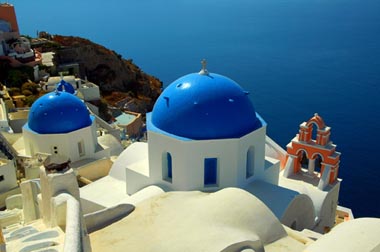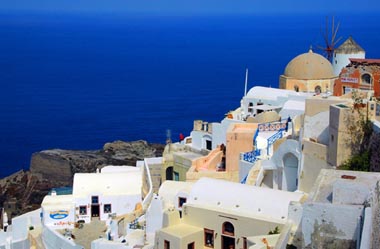There is a quality in man that can lead him to find beauty, life, and hope even in the face of the fact that he will ultimately die. It has been this way since Adam and Eve were expelled from the Garden of Eden.
In the movie, “What about Bob?” the question is phrased somewhat humorously by twelve-year-old Siggie (Sigmund) when asked why he always wears black. “I am in mourning for my lost childhood. Do you realize that no matter what we do, no matter how hard we try, we can’t keep ourselves from dying?” This was such a constant worry to Siggie that it was keeping him from living the life that was given to him.
Presidents Monson, Eyring, and Uchtdorf know this just as well as Siggie did, and yet they all possess a sense of buoyancy that communicates itself as joy, even in the face of the trials we all have as we near the very end of the earth. Why are they joyful? Because they know that life is eternal. That the best is yet to come. That our growing up years on earth are not all there is. And because of that knowledge, “There is beauty all around.”
On a recent voyage, David and I were delighted to experience a “lesson from life” that illustrated this principle perfectly. It is found in the faith and buoyancy of the people who inhabit the Greek Isle of Santorini. This “isle” is actually the lip of an enormous crater. The crater belongs to a volcano that last erupted in the 1956, destroying and reshaping all the islands that form the lip.
In the past sixty years, life has once again begun to flourish on Santorini. A cliff island, it rises nearly perpendicular to the sea. Its two major cities, Oia and Thira, perch on the very top. They present an amazing sight, for the architecture of their buildings is all the same – blocks of blindingly whitewashed cement with arched roofs and doorways, glorified against the brilliant, unbelievable blue of the Aegean Sea. There are more than 400 Greek Orthodox churches on this little island and they are domed in blue that exactly matches the sea.

Photos by David P. Vandagriff.
The land is desolate on Santorini, for it receives less than five inches of rain in a year. Yet their principal income (next to tourism) comes from agriculture. They have innovated a way of growing grapes with very little water and making a famous Greek wine of which they are very proud.
The grapes grow in “vine baskets” contrived by the farmers, as the vines grow, the farmers wind the vines around in a circle that stays close to the ground. The grapes grow in these small “baskets” sheltered from the sun by the leaves of the plant. In this way, they capture all the humidity from the soil, and that is how they are watered. The wine is so fine and so well-known that visitors come to the island every day for wine-tastings.
We went to see the glory of the landscape – these two cities built in denial of catastrophe in brilliant white, capped in blue on the edges of cliffs.


It is inspiring what we can build during our lifetimes. Like Siggie, we can live in constant fear of death and accomplish nothing, or we can glorify the Creator and build lives of great beauty and courage. We can be a unique people, creating spectacular architecture in our allotted space – the architecture of hope. We can contrive lives of abundance out of the desert, using new ways of thinking and coping with what some believe to be impossible problems.
Our very weaknesses can become our strengths.
The residents of Santorini are quite devout, as evidenced by the number of churches. I have no doubt that they know that the physical structures they have built are as temporary as their own mortal bodies. But they choose to celebrate life, and in doing so, create characters that are eternal. We don’t take our homes into the next life, but we take the beauty we have created in our souls by choosing to hope in the Savior and his redeeming love. In our journey through life, whether by donkey on Santorini or by Mercedes on the German autobahn, our souls are tempered and tested by the obstacles we face and what we choose to make of them.
We know that hope is eternal, and volcano or no volcano, there is no such thing as extinction.

















